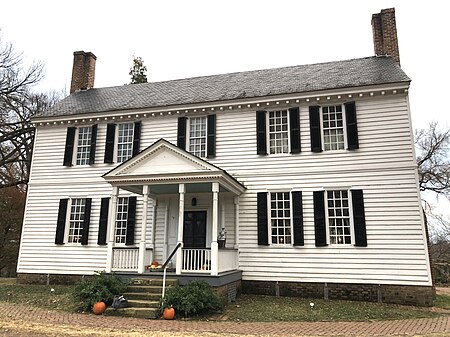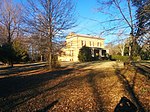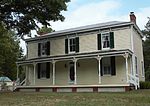Tuckahoe (plantation)
Georgian architecture in VirginiaHistoric American Buildings Survey in VirginiaHistoric districts on the National Register of Historic Places in VirginiaHistoric house museums in VirginiaHouses completed in 1712 ... and 14 more
Houses in Henrico County, VirginiaHouses on the National Register of Historic Places in VirginiaJefferson family residencesMuseums in Goochland County, VirginiaMuseums in Henrico County, VirginiaNRHP infobox with nocatNational Historic Landmarks in VirginiaNational Register of Historic Places in Goochland County, VirginiaNational Register of Historic Places in Henrico County, VirginiaPlantation houses in VirginiaPresidential homes in the United StatesRandolph family residencesSlave cabins and quarters in the United StatesUse mdy dates from August 2023

Tuckahoe, also known as Tuckahoe Plantation, or Historic Tuckahoe is located in Tuckahoe, Virginia on Route 650 near Manakin Sabot, Virginia, overlapping both Goochland and Henrico counties, six miles from the town of the same name. Built in the first half of the 18th century, it is a well-preserved example of a colonial plantation house, and is particularly distinctive as a colonial prodigy house. Thomas Jefferson is also recorded as having spent some of his childhood here. It was declared a National Historic Landmark in 1969.
Excerpt from the Wikipedia article Tuckahoe (plantation) (License: CC BY-SA 3.0, Authors, Images).Tuckahoe (plantation)
Geographical coordinates (GPS) Address Nearby Places Show on map
Geographical coordinates (GPS)
| Latitude | Longitude |
|---|---|
| N 37.570472222222 ° | E -77.653166666667 ° |
Address
23113
Virginia, United States
Open on Google Maps








